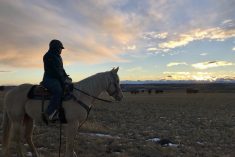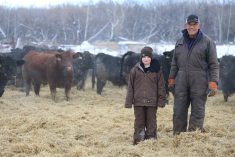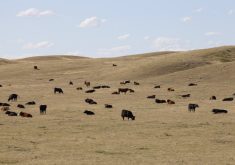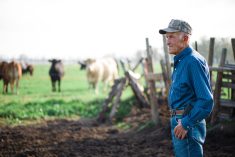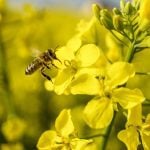Ranching is ranching, wherever you are. Or is it? Erika and Cyle Stewart would likely say it is, and it is not.
Relocating a house and family to another province is no small task. Make it an entire ranch and cow herd and you are at a whole other level.
In 2017, the Stewarts had sold their ranch in Merritt, B.C. Erika’s parents, Bill and Terry Strande, had been ranching there since 1962, when Bill’s family moved there from Piapot, Sask. It is where Erika and her brother grew up, literally riding the range. The operation included Crown range of over 100,000 acres and extended 80 miles from one end to the other. After calving in February, the grazing season entailed moving cows to the far end and then turning around and bringing them back.
Read Also
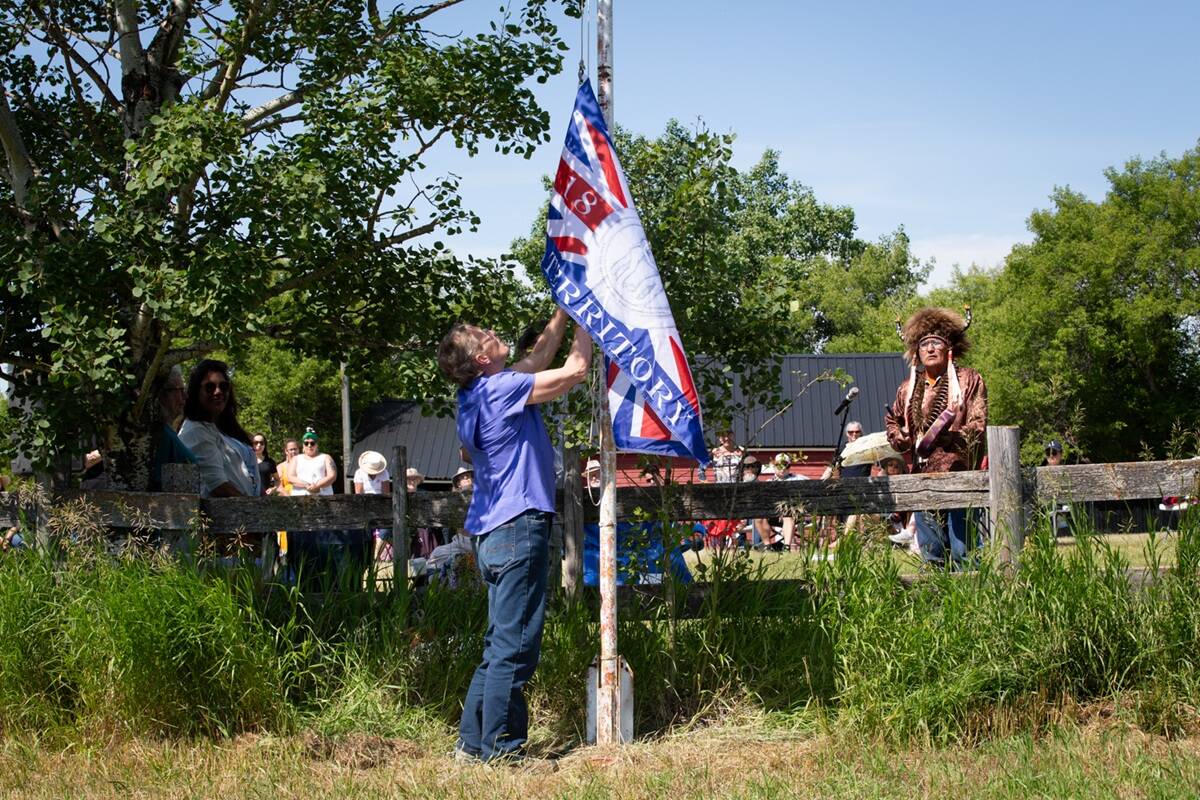
Treaty Land Sharing Network expands reach in Saskatchewan and Alberta
The Treaty Land Sharing Network, which connects land holders with First Nations and Metis people, has expanded since it began in 2018
At one time that range had been their domain, but in recent years they were feeling significant encroachment by the general public. That was a significant factor in their decision to relocate. “We really wanted more control,” says Cyle.
The B.C. ranch was sold, and April 2017 was set as the possession date for the new owners. The Stewart family had been looking all over Saskatchewan for three years but nothing seemed quite right. In February, as they were starting to feel some pressure, they happened along the operation north of Morse.
“This place ticked most of the boxes,” says Cyle.
The Saskatchewan place encompassed 18 quarters, all in grass, predominately native, and all in one block. Erika says they wanted a place with water and hills. They did manage to find a few trees, but the Saskatchewan landscape was very different. They added facilities with a shop, two barns and corrals, made of free-standing pipe panels. In 2018 they were able to purchase the neighbouring 16 quarters, still having the ranch all in one block.

Erika was part of a panel at the Canadian Beef Industry Conference in August in Saskatoon and when asked what the biggest challenge was, said, “Undoubtedly the weather, as it has been a drought since moving to Saskatchewan.”
The couple are often asked about the adaptability of the B.C. cows moving to Saskatchewan. Erika says they were concerned about that and were very intentional when transporting the cows, which had calves at side at the time. They had worked with their nutritionist to ensure the ration would be the most favourable for a 14-hour truck ride. The calves were all pre-conditioned. Cyle was in Saskatchewan on the receiving end and Erika and her dad were on the shipping end.
“Dad and I would go out and gather 40 pairs, and we had to be sure they were all matched,” she says. It was not a matter of going a couple of miles down the road to sort out pairs again.
“We only treated one calf after,” Cyle says.
They had also culled significantly before the move. It did take a bit for the cows to get accustomed to smaller pastures as opposed to the open range.
Being constant learners, the couple started exploring new management strategies with both grazing and winter feeding. They did a trial last winter of bale grazing that helped them decide to feed for three months this winter, because of, in part, reducing fuel costs. In B.C. they had wintered cows on a silage and fed with a mixer wagon, which worked well for them and intended to do the same in Saskatchewan. But with lower yields and blowing snow, where Cyle had to spend a lot of time and fuel plowing before they could feed, they wanted to explore different options, leading to the bale grazing idea.
“We had also attended a workshop in Montana at the Bruski Ranch, hosted by Eastern Montana Regenerative Agriculture, which was applying many of the adaptive principles. The environment and conditions on that ranch were very similar to our place,” says Cyle. “We were able to see first-hand how the concepts of rest/recovery in grazing and leaving litter to cover the ground had significantly impacted that ranch.” Water infiltration demonstrations further illustrated the benefits.
They have also implemented planned grazing and with some moisture in the earlier parts of this year’s growing season, were impressed with the results. As recipients of the Canadian Forage and Grazing Association On-Farm Climate Action Fund for rotational grazing, they have expanded the fencing and are implementing a significant water project with pipelines, storage and troughs. They have been able to stockpile graze and delay the turnout onto the native pastures.
“The earlier season rains were what our hearts needed,” says Erika.
Moving to a new community is not always easy but they found welcoming and supportive neighbours. There are several young families in the community, which is great for them and their daughters. They also formed some close ties with those of the wider ranching community. They got involved in the ranch roping events, and stock dogs. Cyle became a councillor in 2021. He wanted to understand the structure and finances of the municipality and to gain an understanding of board governance. Erika is also the Verified Beef Production Plus co-ordinator in Saskatchewan, since 2019, which has led to many relationships and support.
When asked if there were things they would have done differently, the couple shares a laugh. Erika says, “We made tons of mistakes. But honestly, that is how we learnt, and we would not have changed much.”
The couple felt deeply honoured to first be nominated for Saskatchewan’s Outstanding Young Farmer award in 2024, by a respected colleague, Stuart Chutter. Chutter is also from B.C. and has known the couple for a long time, following their journey to build an operation on the Prairies.
“I think they are outstanding not only from a business perspective but also from the whole life they have created for their multi-generational family. They place value on the environment and community as much as their business,” he says.
They were then honoured to receive the award at a luncheon in Regina in June.
“It was an inspiring opportunity to be in a room filled with amazing people who have so much drive and are doing progressive things in the agriculture industry,” Erika says.
Receiving the award has been motivational and spurs them to keep asking: “How can we keep getting better?” They are also proud to be representing the ranching/livestock segment of the industry. Another respected member of this sector, when congratulating them, said, “It is great to see soil and grass in the limelight.”
The Stewarts are now in the running for the national Outstanding Young Farmer Award, which will be announced in Lethbridge, Alta., later this month.



